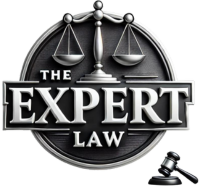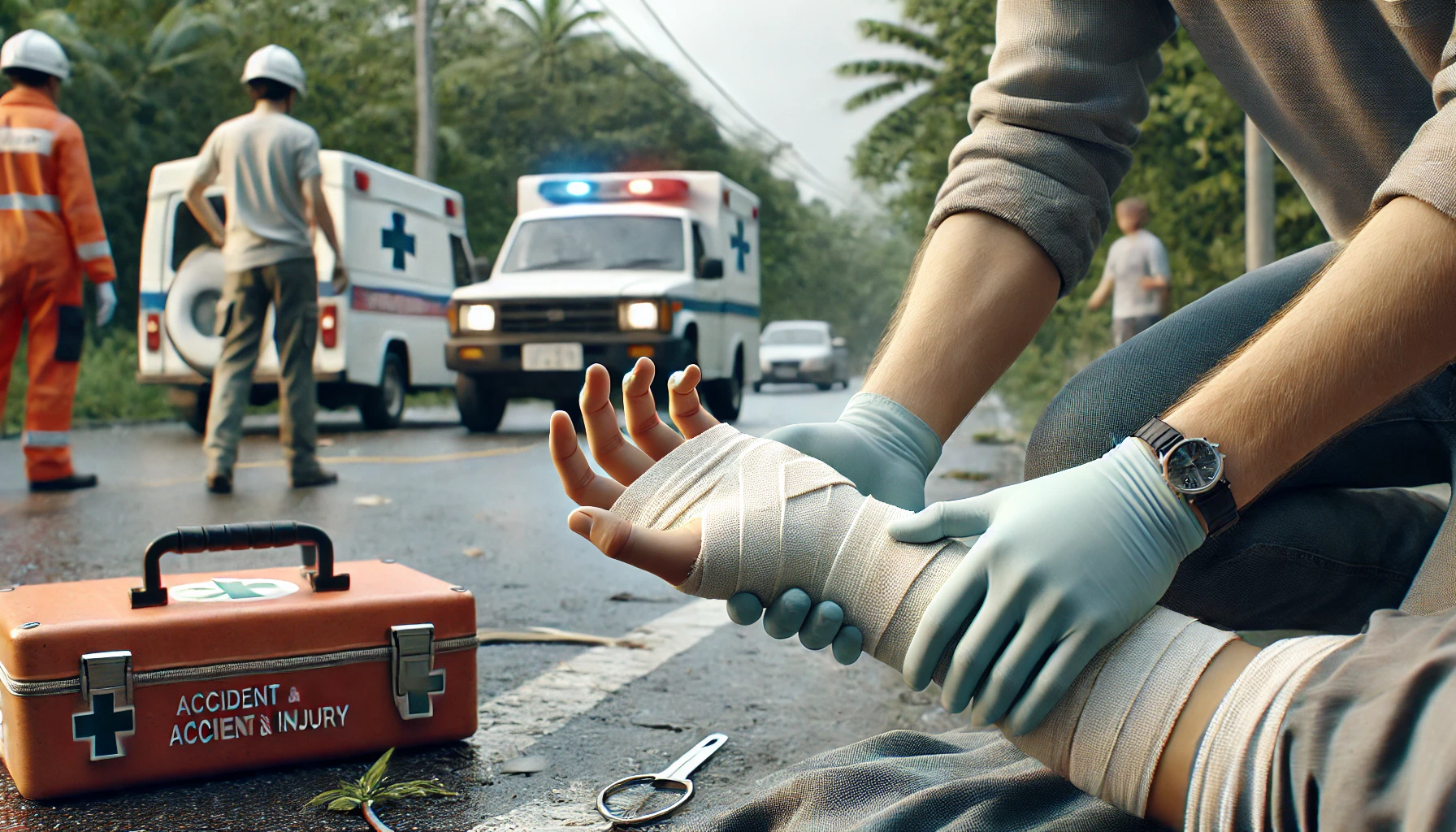Introduction
Understanding accidents and injuries is very important. It helps in legal cases, medical treatment, and improving safety. Knowing what happens during an accident and the types of injuries that can occur helps everyone involved. This knowledge can make legal processes smoother, ensure proper medical care, and lead to better safety measures.
What is an Accident?
An accident is an unexpected and unintended event that can cause damage or injury. Accidents happen without warning and are not planned. They can be minor, like a small slip at home, or severe, like a car crash or a workplace mishap. Understanding what constitutes an accident helps in dealing with its aftermath, whether it’s handling injuries or addressing property damage.
What is an Injury?
An injury refers to physical harm or damage to a person’s body. Injuries can happen due to accidents, intentional acts, or negligence. Here are different types of injuries:
- Soft Tissue Injuries: These include sprains, strains, and bruises. They affect muscles, ligaments, and tendons.
- Fractures: These are broken bones, ranging from simple cracks to complete breaks.
- Traumatic Brain Injuries: These are serious injuries that impact the brain, often caused by a strong blow to the head.
Understanding the types of injuries helps in providing the right medical care and addressing any legal issues that may arise.
Common Types of Personal Injury Cases
There are several common types of personal injury cases. Here are some examples:
1. Negligence:
Definition: Injuries caused by someone failing to act with reasonable care.
Example: A driver not paying attention and causing a car accident.
2. Intentional Harm:
Definition: Injuries resulting from deliberate actions.
Example: An assault where one person intentionally harms another.
3. Product Liability:
Definition: Injuries caused by defective or unsafe products.
Example: A person getting injured by a faulty appliance or toy.
4. Defamation:
Definition: Harm caused by false statements damaging someone’s reputation.
Example: Someone spreading lies about a person that ruin their reputation and career.
These personal injury cases highlight the different ways people can be harmed and the importance of seeking legal help to address these issues.
Distinguishing Between Accidents and Incidents
In occupational safety, it’s important to distinguish between accidents and incidents:
1. Accidents:
Definition: Accidents are unforeseen and unavoidable events that typically result in severe consequences.
Example: A worker falling from a height due to a faulty scaffold, resulting in serious injury.
Implication: Accidents often lead to major injuries, significant property damage, or both, and require immediate attention and thorough investigation.
2. Incidents:
Definition: Incidents include any unplanned event that may cause minor injuries or property damage but do not necessarily lead to severe outcomes.
Example: A worker tripping over a cable and getting a small bruise or causing a minor spill.
Implication: Incidents are broader in professional safety language and encompass all events, including near-misses that could have resulted in more serious consequences.
Understanding the difference helps in addressing and preventing workplace hazards effectively. While accidents demand urgent response and in-depth investigation, incidents require attention to improve safety practices and prevent future occurrences.
Steps to Take After an Accident
After an accident, it’s important to follow these steps to ensure safety and proper documentation:
1. Checking for Injuries and Seeking Medical Attention:
Step: Assess yourself and others for injuries. If anyone is hurt, call for medical help immediately.
Action: Provide first aid if trained and safe to do so. Ensure injured persons receive professional medical attention as soon as possible.
2. Calling the Police to Report the Incident:
Step: Contact the police to report the accident, even if it seems minor.
Action: Provide accurate details about the location and nature of the accident. The police will document the incident and create an official report.
3. Documenting the Scene with Photos and Collecting Witness Statements:
Step: Take clear photos of the accident scene, including any damage to vehicles or property, and any visible injuries.
Action: Gather contact information and statements from witnesses who saw the accident. Their accounts can be crucial for insurance claims and legal matters.
4. Notifying Insurance Companies:
Step: Inform your insurance company about the accident as soon as possible.
Action: Provide all necessary information, including the police report number, photos, and witness statements. Follow their instructions for filing a claim.
Following these steps helps ensure that everyone’s safety is prioritized, the accident is properly documented, and all necessary parties are informed, facilitating smoother insurance and legal processes.
Understanding the Average Settlement for Car Accident Back and Neck Injury Claims
Legal Implications and Compensation
Understanding the legal aspects of accidents and injuries is crucial for seeking fair compensation. Here’s an overview of how liability is determined and the types of compensation victims can seek:
Determining Liability
1. Fault and Negligence:
-
- Definition: Liability is often determined by identifying who was at fault. If someone fails to act with reasonable care, they may be considered negligent.
- Example: A driver running a red light and causing a collision is likely at fault due to negligence.
2. Evidence Collection:
-
- Action: Collecting evidence, such as police reports, witness statements, and photos of the accident scene, helps establish liability.
- Importance: Proper documentation supports your claim and helps prove who was responsible for the accident.
Types of Compensation
Victims of accidents and injuries can seek various types of compensation to cover their losses:
1. Medical Bills:
-
- Coverage: Compensation can cover hospital stays, surgeries, medications, physical therapy, and any other medical expenses related to the injury.
2. Lost Wages:
-
- Coverage: If the injury prevents you from working, you can claim compensation for lost income, both past and future, if the injury affects your ability to earn.
3. Pain and Suffering:
-
- Coverage: This compensation addresses the physical pain and emotional distress caused by the injury. It accounts for the impact on your quality of life.
4. Property Damage:
-
- Coverage: Compensation for any damage to your property, such as your vehicle or personal belongings, caused by the accident.
Seeking Legal Help
- Action: Consulting with a personal injury lawyer can help navigate the legal process, gather necessary evidence, and negotiate with insurance companies.
- Importance: A lawyer ensures that your rights are protected and helps maximize the compensation you receive.
By understanding these legal implications and knowing the types of compensation available, victims can better navigate the aftermath of an accident and ensure they receive fair treatment and adequate compensation for their losses.
Preventing Accidents and Injuries
Taking proactive steps can help prevent accidents and injuries in different settings. Here are some tips to enhance safety at home, on the road, and in the workplace:
At Home
-
Safety Measures:
- Install Smoke Alarms: Ensure smoke alarms are installed and working in every room. Test them regularly.
- Secure Rugs and Cords: Use non-slip mats and secure electrical cords to prevent tripping.
-
Regular Maintenance:
- Check Appliances: Regularly inspect and maintain household appliances to prevent malfunctions.
- Repair Damaged Areas: Fix any broken steps, loose handrails, or damaged flooring promptly.
-
Awareness:
- Keep Walkways Clear: Avoid clutter in walkways to reduce the risk of trips and falls.
- Use Safety Equipment: Use gloves, goggles, and other safety gear when performing tasks like gardening or using tools.
On the Road
-
Safety Measures:
- Wear Seatbelts: Always wear a seatbelt and ensure all passengers do the same.
- Follow Traffic Laws: Adhere to speed limits, stop signs, and traffic signals.
-
Regular Maintenance:
- Vehicle Check-ups: Regularly service your vehicle to ensure brakes, tires, and lights are in good condition.
- Fluid Levels: Check and maintain fluid levels, including oil, coolant, and brake fluid.
-
Awareness:
- Avoid Distractions: Stay focused on the road and avoid using your phone while driving.
- Stay Alert: Be aware of other drivers, pedestrians, and potential hazards.
In the Workplace
-
Safety Measures:
- Use Protective Gear: Always wear appropriate personal protective equipment (PPE) for your job.
- Follow Safety Protocols: Adhere to workplace safety procedures and guidelines.
-
Regular Maintenance:
- Equipment Inspections: Regularly inspect machinery and tools for wear and tear.
- Emergency Exits: Ensure emergency exits are clear and well-marked.
-
Awareness:
- Training Programs: Participate in safety training and drills to stay informed about best practices.
- Report Hazards: Immediately report any unsafe conditions or potential hazards to supervisors.
By implementing these safety measures, performing regular maintenance, and staying aware of potential risks, you can significantly reduce the likelihood of accidents and injuries in various settings. Prioritizing safety helps protect yourself and others from harm.
Conclusion
Understanding accidents and injuries is essential for ensuring safety, legal protection, and financial security. Accidents are unexpected events that can cause damage or harm, while injuries refer to the physical damage to a person’s body. It is crucial to distinguish between the two, as this understanding aids in proper response and documentation. After an accident, immediate steps should include checking for injuries, seeking medical attention, reporting the incident to the police, documenting the scene, and notifying insurance companies. Preventative measures at home, on the road, and in the workplace can significantly reduce the risk of accidents and injuries. Consulting with a personal injury lawyer can help navigate the legal aspects and secure fair compensation.
FAQs
1. What are accidents and injuries?
Accidents are unexpected and unintended events that can result in damage or harm. Injuries refer to the physical harm or damage to a person’s body.
2. What is the difference between an accident and accidental injury?
An accident is the event itself that causes harm or damage. An accidental injury is the physical harm that results from the accident.
3. How long will I be sore after a car accident?
The duration of soreness after a car accident varies. It can last from a few days to several weeks, depending on the severity of the impact and the individual’s physical condition. It’s important to seek medical attention if soreness persists.
4. How long does it take to emotionally recover from a car accident?
Emotional recovery from a car accident can vary greatly. Some people may recover in a few weeks, while others may take several months or even longer. Seeking support from mental health professionals can aid in the recovery process.
Explore the Personal injury realm with The Expert Law. Visit our website for limitless inspiration!





